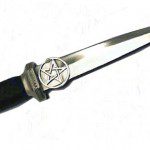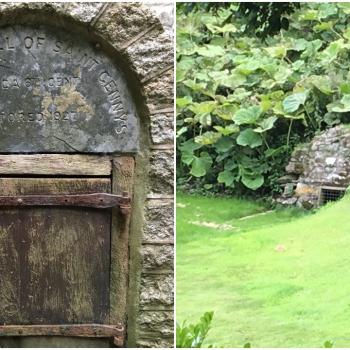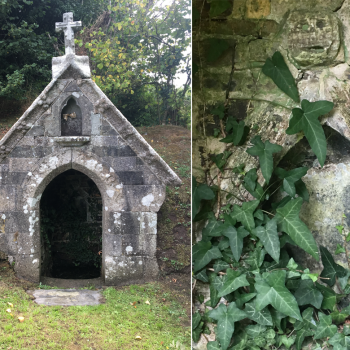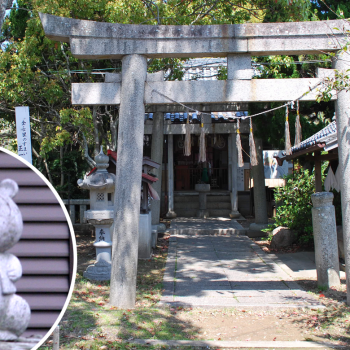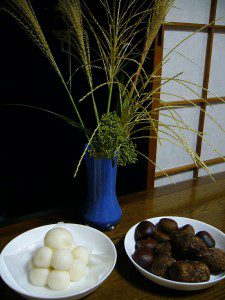
Tsukimi rituals
The most common activity at Tsukimi is to offer food and sake (rice wine) to the Moon, often on the veranda. Perhaps the most iconic Tsukimi offerings are tsukimi-dango. These are small, round, white dumplings that are usually stacked in a high pyramid upon a special pedestal called a sanpō. By stacking the dango high in a pyramid, the Japanese believe they are able to reach the realm of spirits. In addition to these offerings, people often eat soba or udon noodles topped with an egg, as the egg represents the Moon (it is curious that rabbits and eggs can be autumnal symbols in East Asia, but are spring symbols in Europe!). Other offerings may include an arrangement of susuki, sometimes called “Chinese silver grass,” which is said to protect the home from negative energies.
In the past, Tsukimi was a time for families to hold night-time parties involving poetry recitals – preferably by a pond reflecting the Moon. Today, Tsukimi is considered a rather sober, contemplative affair, appropriate to the wistful and reflective mood that many people feel in the coming of autumn.
With its date close to the Autumn Equinox and its origins in the autumn harvest, it’s easy to draw comparisons between Tsukimi and Mabon. But there’s actually one Tsukimi tradition that is reminiscent of a popular activity at Samhain. That is the tradition of otsukimi-dorobō – “Tsukimi stealing.” This involves children taking otsukimi-dango from local houses. It is said that at Tsukimi, children take the role of messengers from the Moon, and so on this day they are permitted to take the offerings intended for the Moon. Adults therefore deliberately leave the otsukimi-dango in a place where it is easy for them to be taken. The children come round with long poles with a nail on them to try and snag a dango. Apparently this tradition has fallen out of fashion; a more modern version is for the children to shout out “Otsukimi-dorobō desu!” (“it’s the Tsukimi thief!”) and to then be given sweets. Doesn’t it sound like Trick or Treat?
Tsukimi is one of my favourite Japanese festivals. I love its imagery, its food, its serene and mysterious atmosphere, and its close resemblance to Neopagan rituals venerating the Moon. This Full Moon Esbat, why not make it extra special by incorporating some Tsukimi traditions? You could offer seasonal food and drink, make an arrangement of seasonal plants, and perhaps compose some poetry inspired by the Full Moon. You could even indulge fully in the Tsukimi spirit and host a party for friends and family to come and view the Moon altogether! And while you’re at it, see if you can spot the rabbit making his rice cakes…
References and further reading
Wikipedia, “Chang’e” “Tsukimi,” “Mid-Autumn Festival“


